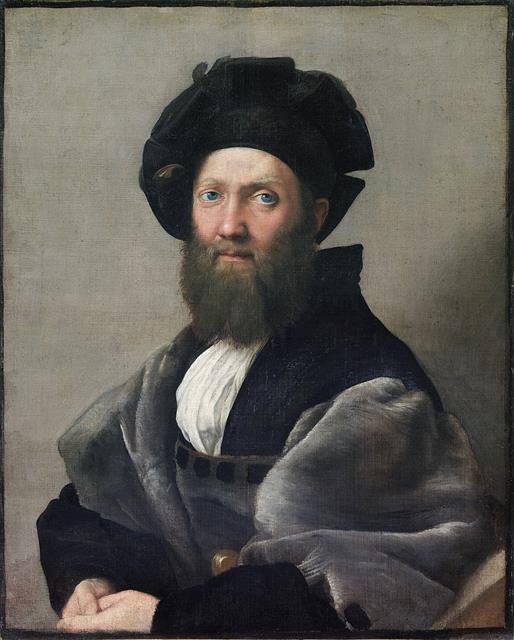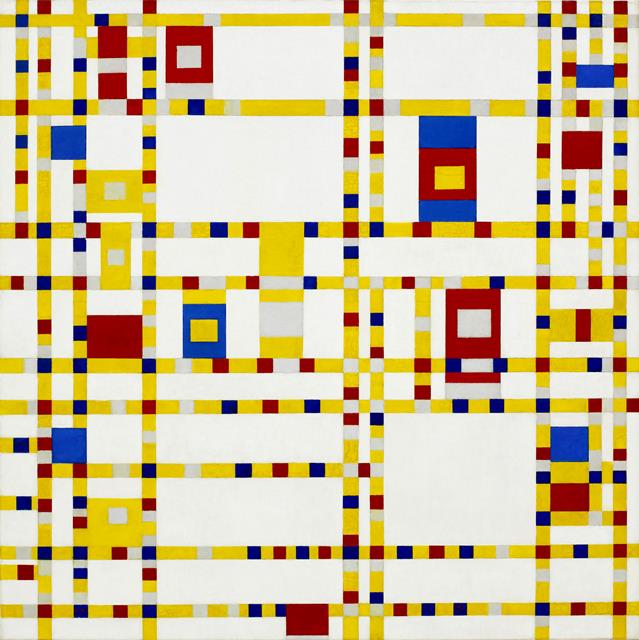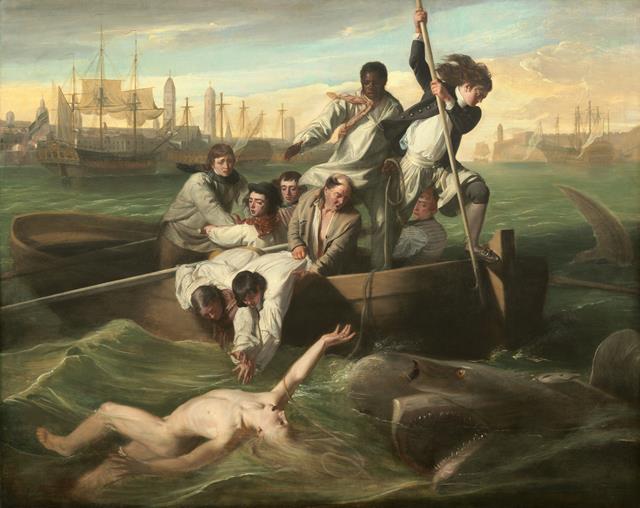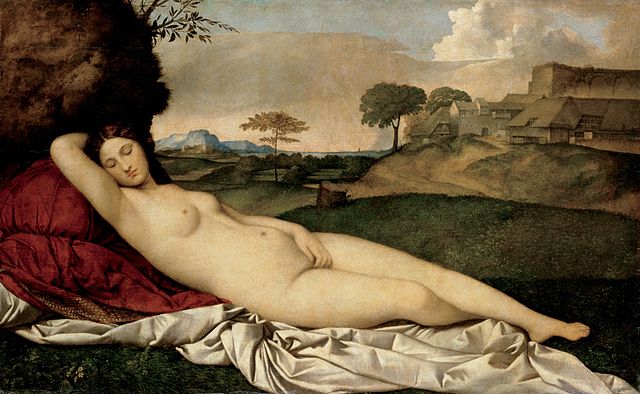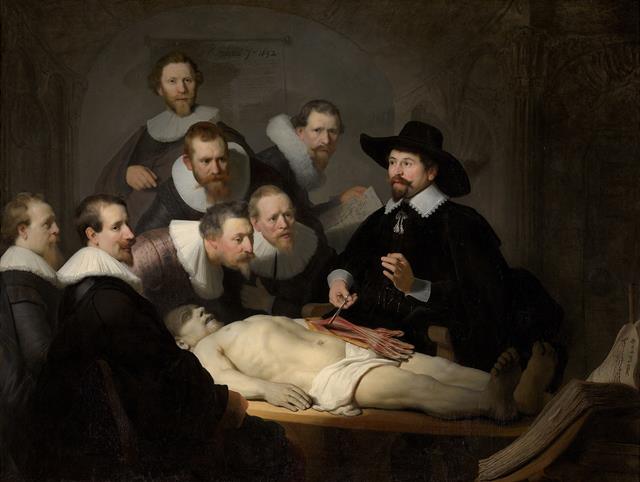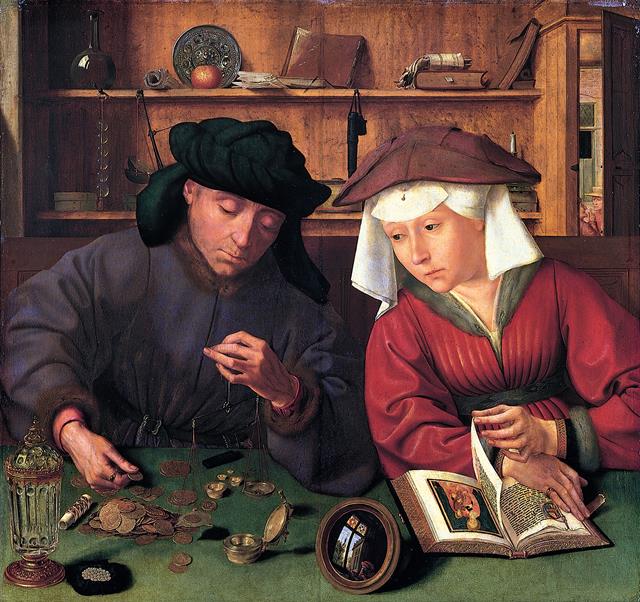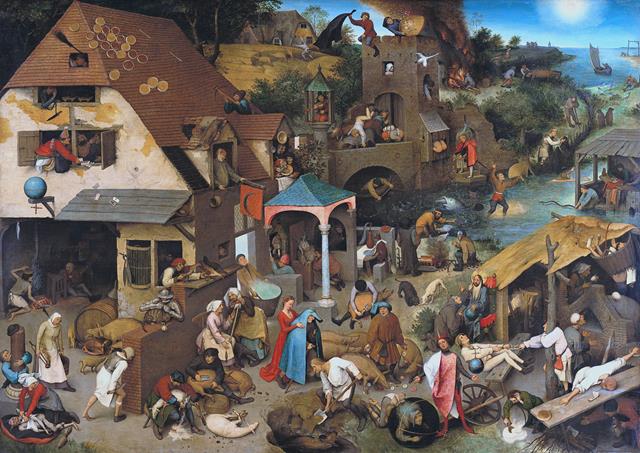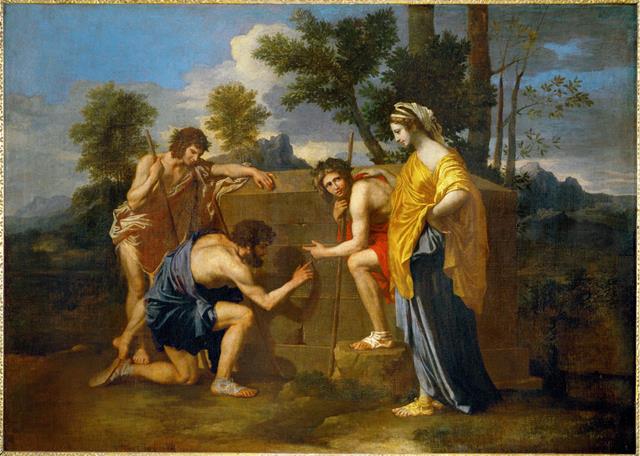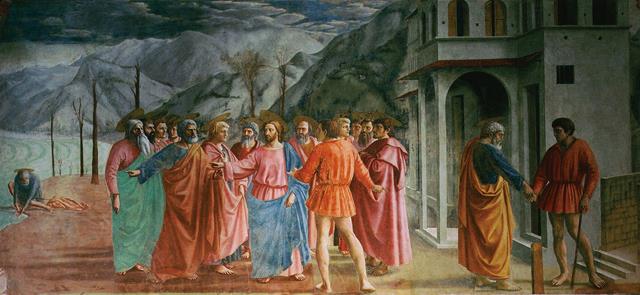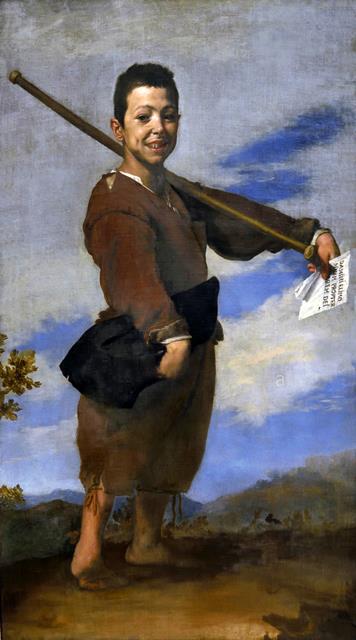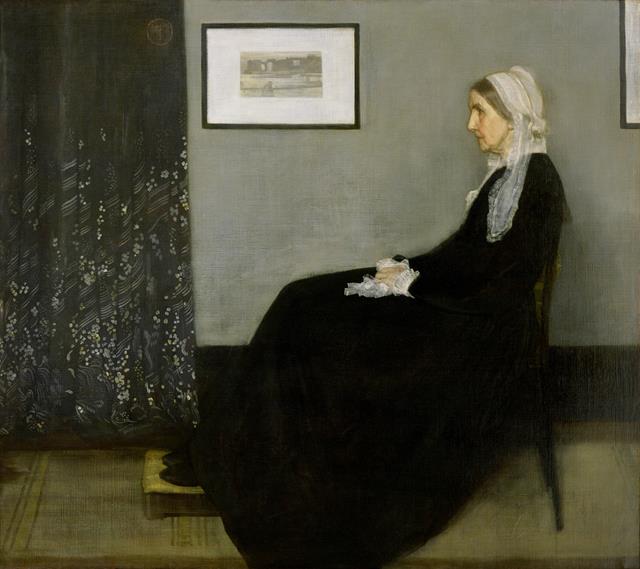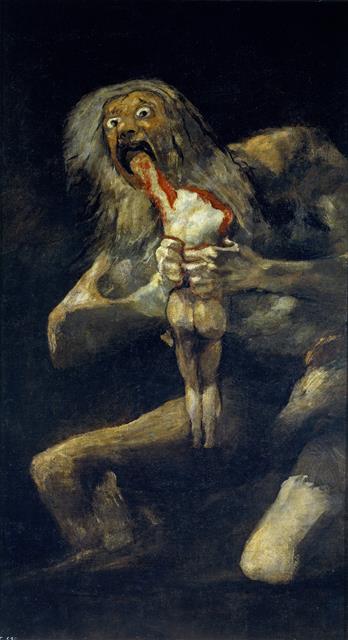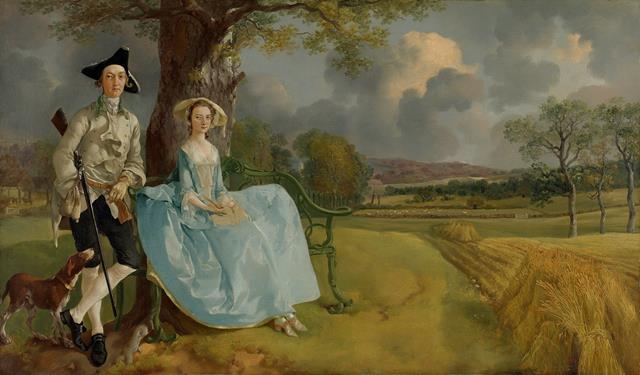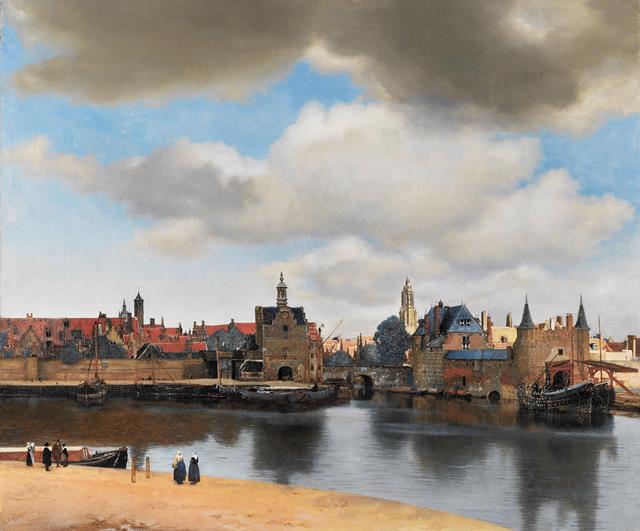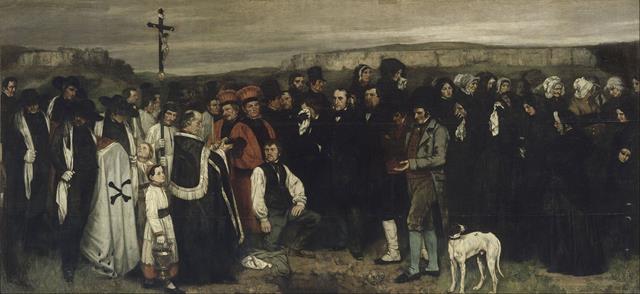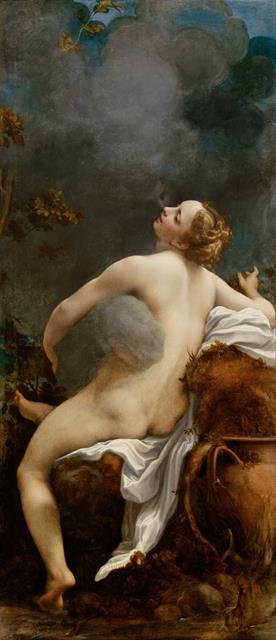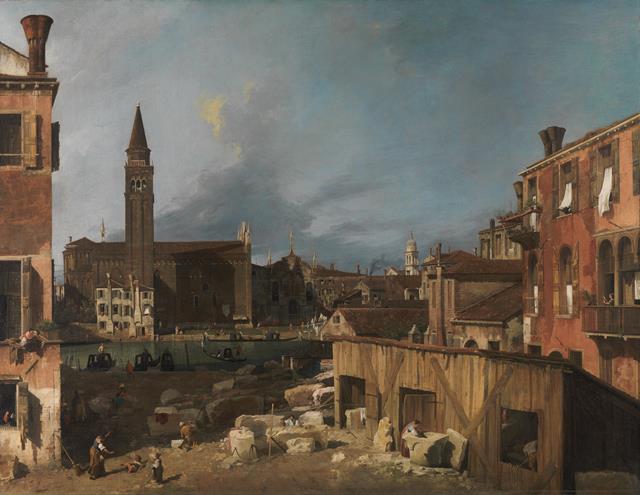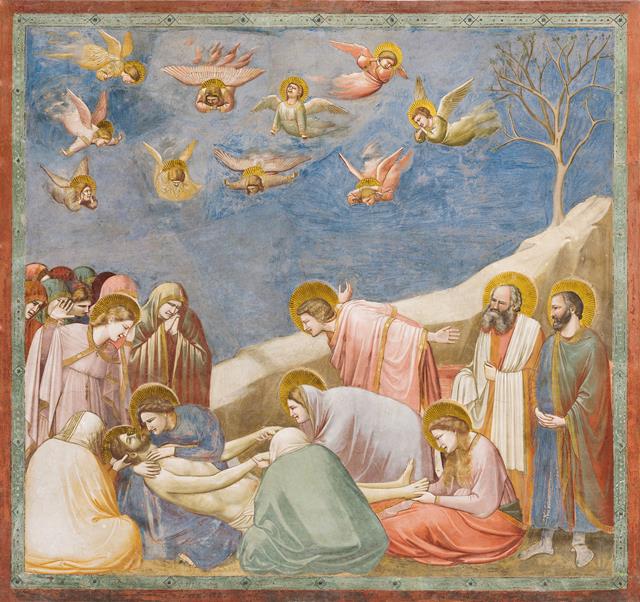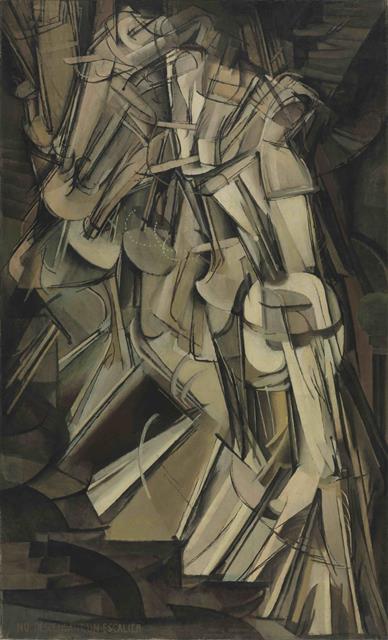Discover the Finest Artworks: Top 200 Paintings Worldwide (#175–151)
Explore our meticulously researched compilation showcasing the 200 greatest paintings globally. Each painting is accompanied by comprehensive details, including size, location, materials used, its frequency in experts' lists, and our own rating.
Table of Contents
ToggleCurrently you are exploring #175–151.
Click on the following links to discover #200–176, #175–151, #150–126, #125–101, #100–76, #75–51, #50–25, #24–1 of our list of the 200 best paintings in the world.
Our list is curated through an in-depth analysis of over 20 influential art books in various languages and multiple reputable sources.
Uncover our methodology and the selected art books behind this definitive top 200 list by clicking here.
#175 | Raphael (Raffaello Sanzio), “Portrait of Baldassare Castiglione”
Transcending Mere Representation, Offering a Timeless Portrayal
Baldassare Castiglione was not only a subject to this painting but also a close friend of Raphael, adding a personal dimension to the portrait.
He was not only a diplomat but also an author, known for his influential work, "The Book of the Courtier."
Through his masterful brushwork, Raphael captures not just the physical likeness of his subject but also the inner essence of a man deeply immersed in the intellectual and cultural milieu of his time.
Date: 1514–1515
Dimensions: 82 x 67 cm (32 x 26.4 in)| medium-sized
Material: Oil on canvas
Collection: Musée du Louvre, Paris 🇫🇷
Art Movement: High Renaissance, Florentine School 🇮🇹
Experts’ Choice: 10x
Our Score: 5.50
#174 | Piet Mondrian, “Broadway Boogie Woogie”
Mondrian's Final Symphony: Tracing the Artist's Journey Through "Broadway Boogie Woogie"
The painting captures the energy and rhythm of New York City, particularly the bustling streets of Broadway, through its intersecting lines and geometric shapes.
Mondrian's meticulous arrangement of squares and rectangles, each filled with primary colors and punctuated by smaller blocks of white and grey, creates a sense of movement and vitality that reflects the pulsating tempo of urban life.
The painting's title references the lively jazz music of the same name, reflecting Mondrian's fascination with the rhythm and energy of modern urban culture.
"Broadway Boogie Woogie" was Mondrian's final major work before his death in 1944, making it a poignant culmination of his artistic journey.
Date: 1942–43
Dimensions: 127 × 127 cm (50 × 50 in ) | medium-sized
Material: Oil on canvas
Collection: Museum of Modern Art (MoMA), New York City 🇺🇸
Art Movement: Abstract Art, Dutch 🇳🇱
Experts’ Choice: 10x
Our Score: 5.50
#173 | John Singleton Copley, “Watson and the Shark (Washington Version)”
A Visual Documentation of a Real-Life Event
This painting depicts a gripping moment of peril as a young man, Brook Watson, is attacked by a shark while swimming in Havana Harbor in 1749.
Copley's meticulous attention to detail, especially in rendering the expressions of fear and desperation on the faces of the characters, adds to the emotional intensity of the scene.
The painting's historical significance, as it documents a real-life event and reflects the era's fascination with maritime adventures, further elevates its status as a masterpiece.
Date: 1778
Dimensions: 182.1 x 229.7 cm (71.6 x 90.4 in) | very large
Material: Oil on canvas
Collection: National Gallery of Art Washington, D.C. 🇺🇸
Art Movement: Realism, American 🇺🇸
Experts’ Choice: 10x
Our Score: 5.50
#172 | Giorgione and Titian, “Sleeping Venus”
The First Known Reclining Nude in Western Painting, Completed by Titian after Giorgione’s Death
The painting's enigmatic charm has inspired countless interpretations over the centuries, reflecting the enduring fascination with its captivating imagery.
Regarded as the earliest known depiction of a reclining nude in Western art, the painting is traditionally associated with Giorgione, with prevailing speculation suggesting Titian's involvement in its completion following Giorgione's demise in 1510.
Titian is mostly credited with the landscape and sky.
Date: c. 1510
Dimensions: 108.5 cm × 175 cm (42.7 in × 69 in) | very large
Material: Oil on canvas
Collection: Gemäldegalerie Alte Meister, Dresden 🇩🇪
Art Movement: Early Renaissance, Venetian School 🇮🇹
Experts’ Choice: 10x
Our Score: 5.50
#171 | Rembrandt Harmenszoon van Rijn, “Anatomy Lesson of Dr. Nicholaes Tulp”
A Profound Insight into the Convergence of Art, Science, and Human Understanding
"Anatomy Lesson of Dr. Nicholaes Tulp" was commissioned by the Amsterdam Guild of Surgeons in 1632 and remains one of Rembrandt's most renowned works, showcasing his ability to elevate a seemingly mundane subject matter into a profound meditation on human knowledge and mortality.
The painting features Dr. Nicholaes Tulp, a prominent anatomist of the Dutch Golden Age, demonstrating the dissection of a cadaver to a group of his peers, highlighting the intersection of science, art, and academia in 17th-century Amsterdam.
Rembrandt's meticulous portrayal of the dissection is not merely artistic but also serves as an early medical illustration, reflecting the scientific advancements of the time.
The carefully arranged figures in the painting not only showcase each individual's role in the dissection but also convey a subtle narrative of power dynamics and intellectual exchange.
Date: 1632
Dimensions: 216.5 cm × 169.5 cm (85.2 in × 66.7 in) | very large
Material: Oil on canvas
Collection: Mauritshuis, The Hague 🇳🇱
Art Movement: Baroque, Flemish 🇳🇱
Experts’ Choice: 11x
Our Score: 5.50
#170 | Quentin Massys, "The Money Changer and His Wife"
Profound Portrayal of Human Emotion Combined with Nuanced Symbolism
Quentin Massys' "The Money Changer and His Wife" is considered a masterpiece of painting for its intricate composition, nuanced symbolism, and profound portrayal of human character and emotion.
The inclusion of numerous symbolic elements in the foreground and background, such as the discarded coins and the mirror reflecting the money changer's face, imbues the artwork with layers of meaning and invites viewers to contemplate themes of wealth, greed, and morality. The two people outside the door may demonstrate more daily life.
Scholars have offered various interpretations of the painting's meaning, with some viewing it as a moralizing commentary on the dangers of greed and others focusing on its psychological depth and exploration of human relationships.
Date: 1514
Dimensions: 70.5 cm × 67 cm (27.8 in × 26 in) | medium-sized
Material: Oil on panel
Collection: Louvre Abu Dhabi, Abu Dhabi 🇦🇪
Art Movement: Northern Renaissance, Flemish 🇧🇪
Experts’ Choice: 11x
Our Score: 5.50
#169 | Pieter Bruegel the Elder, "Netherlandish Proverbs"
Invites Viewers to Decipher Its Intricate Symbolism and over 100 Proverbs and Idioms
Through its complex narrative and visual storytelling, "Netherlandish Proverbs" transcends mere representation to become a timeless exploration of human behavior and societal norms.
The painting features over 100 proverbs and idioms from Netherlandish folklore, ranging from the literal to the metaphorical, adding depth and richness to its narrative.
Bruegel employed a unique artistic technique known as "world landscape," wherein he depicted a panoramic view of the countryside as the backdrop for the myriad scenes of daily life and allegorical representations.
Date: 1559
Dimensions: 117 cm × 163 cm (46 in × 64 in) | large
Material: Oil on oak
Collection: Gemäldegalerie, Berlin 🇩🇪
Art Movement: Northern Renaissance, Flemish 🇧🇪
Experts’ Choice: 11x
Our Score: 5.50
#168 | Nicolas Poussin, "The Arcadian Shepherds (Et in Arcadia ego) (second version)"
A Reminder That Death Is Present Even in Idyllic Arcadia
"The Arcadian Shepherds" encapsulates the essence of a pastoral idyll, portraying a group of shepherds discovering a tomb adorned with the enigmatic inscription "Et in Arcadia ego" ("Even in Arcadia, there am I" or "I too was in Arcadia"). Arcadia can be interpreted as a lost world of idyllic bliss.
This painting is about the timeless themes of mortality and the fleeting nature of existence, as symbolized by the juxtaposition of the serene landscape and the reminder of death within Arcadia.
The dead, who, speaking to the viewer from the tomb, reminds him that he himself once was enjoying his happy life in Arcadia.
Date: 1637–1638
Dimensions: 85 cm × 121 cm (34.25 in × 47.24 in) | large
Material: Oil on canvas
Collection: Musée du Louvre, Paris 🇫🇷
Art Movement: Classicism, French 🇫🇷
Experts’ Choice: 11x
Our Score: 5.50
#167 | Masaccio, "Tribute Money"
Exploring the Revolutionary Techniques Behind a Renaissance Gem
"Tribute Money" is renowned for its technical innovation, as Masaccio was one of the first painters to fully utilize linear perspective to create a convincing sense of three-dimensional space.
The scene captures a moment of tension and negotiation as Jesus calmly resolves the situation, emphasizing themes of authority, faith, and the relationship between secular and divine power.
Additionally, the lifelike depiction of human emotions and interactions imbues the scene with a sense of drama and narrative complexity, captivating viewers throughout the centuries.
Date: c. 1425
Dimensions: 247 cm × 597 cm (97.2 in × 235 in) | extremely large
Material: Fresco
Collection: Brancacci Chapel, Florence 🇮🇹
Art Movement: Early Renaissance, Italian 🇮🇹
Experts’ Choice: 11x
Our Score: 5.50
#166 | José de Ribera, "The Clubfoot"
A Portrait of Strength: "The Clubfoot" Defies Physical Limitations
The painting depicts a Neapolitan beggar boy with a deformed foot, whose piercing gaze and dignified expression convey a sense of inner strength and resilience despite physical adversity.
It was painted on commission for an art dealer.
Despite his deformity, the subject exudes a quiet dignity, challenging viewers to look beyond physical appearance and recognize the inherent worth and humanity of every individual.
Date: 1642
Dimensions: 164 cm × 92 cm (65 in × 36 in) | very large
Material: Oil on canvas
Collection: Musée du Louvre, Paris 🇫🇷
Art Movement: Baroque, Spanish 🇪🇸
Experts’ Choice: 11x
Our Score: 5.50
#165 | Joan Miró, "The Harlequin's Carnival"
Invites Viewers on a Journey through the Subconscious, Where Reality and Fantasy Intertwine
Miró's masterpiece mesmerizes with its vibrant colors and an innovative dynamic composition.
The carnival motif in the painting reflects Miró's fascination with the surreal and the irrational, inviting viewers to explore the boundaries between reality and imagination.
This demonstrates his commitment to artistic freedom and spontaneity, distinguishing him as a pioneer of abstract expressionism.
Date: 1924–25
Dimensions: 65.4 x 184.2 cm (26 in × 35.6 in) | large
Material: Oil on canvas
Collection: Albright-Knox Art Gallery, Buffalo 🇺🇸
Art Movement: Surrealism, Spanish 🇪🇸
Experts’ Choice: 11x
Our Score: 5.50
#164 | James McNeill Whistler, "Arrangement in Grey and Black, No. 1: The Artist's Mother"
Whistler’s Masterpiece Exudes Maternal Grace and Dignity
The subdued color palette of greys and blacks enhances the mood of introspection, while the carefully rendered details, such as the intricate patterns on the chair and the texture of the fabric, add depth and richness to the composition.
Despite its seemingly austere appearance, the painting's subtle complexities reveal themselves upon closer inspection, inviting viewers to contemplate the deeper layers of meaning embedded within its composition.
Overall, the painting captures a moment of profound intimacy and reverence, celebrating the timeless bond between mother and child.
Date: 1871
Dimensions: 144.3 cm × 162.4 cm (56.81 in × 63.94 in) | very large
Material: Oil on canvas
Collection: Musée d'Orsay, Paris 🇫🇷
Art Movement: Tonalism, American 🇺🇸
Experts’ Choice: 11x
Our Score: 5.50
#163 | Giuseppe Arcimboldo, "Spring (Paris Version)"
Stands as a Testament to the Artist’s Ingenuity and Sparks Imagination with Whimsical Portraiture
"Spring (Paris Version)" was painted by Giuseppe Arcimboldo in 1563 for the French royal court of King Charles IX, showcasing the artist's unique style of creating portraits using fruits, vegetables, flowers, and other objects.
Arcimboldo ingeniously constructs the portrait using a myriad of fruits, vegetables, and flowers, seamlessly blending them to form the visage of a woman.
The painting is part of a series of four seasonal portraits, each representing a different season with its own distinct characteristics and motifs.
Date: 1872–73
Dimensions: 76 x 64 cm (29.9 x 25.1 in) | medium-sized
Material: Oil on canvas
Collection: Musée du Louvre, Paris 🇫🇷
Art Movement: Mannerism, Italian 🇮🇹
Experts’ Choice: 11x
Our Score: 5.50
#162 | Francisco de Goya y Lucientes, “Saturn (Saturn Devouring His Son)”
Evokes Primal Terror with Its Chilling Imagery and Captures the Dark Depths of Human Nature
The essence of "Saturn Devouring His Son" lies in its portrayal of the primal fear of mortality and the destructive nature of power.
The painting depicts the Titan Saturn, driven by a prophetic fear of being overthrown by his offspring, gruesomely devouring one of his own children.
Among Goya's 14 Black Paintings, including 'Saturn Devouring His Son,' created between 1820 and 1823 directly on his house walls, these works, absent any commission, are believed to mirror his mental state in his later years, potentially influenced by the traumas of war and the Spanish Inquisition.
Date: 1819–1823
Dimensions: 143.5 cm × 81.4 cm (56.5 in × 32.0 in) | very large
Material: Oil on canvas
Collection: Museo Nacional del Prado, Madrid 🇪🇸
Art Movement: Romanticism, Spanish 🇪🇸
Experts’ Choice: 11x
Our Score: 5.50
#161 | Thomas Gainsborough, “Mr. and Mrs. Andrews”
A Seamless Integration of the Landscape with the Portraiture
Thomas Gainsborough's "Mr. and Mrs. Andrews" achieves masterpiece status through its sublime pictorial harmony, where every stroke seems to contribute to a symphony of elegance.
The artist's meticulous attention to composition and the seamless integration of the landscape with the portraiture elevate this work to a level of aesthetic brilliance.
Date: c. 1750
Dimensions: 69.8 cm × 119.4 cm (27.5 in × 47.0 in) | large
Material: Oil on canvas
Collection: National Gallery, London 🇬🇧
Art Movement: Rococo, English 🇬🇧
Experts’ Choice: 12x
Our Score: 5.50
#160 | Leonardo Da Vinci, “Virgin of the Rocks (Louvre Version)”
Inspires Spiritual Reflection through Profound Composition
The "Virgin of the Rocks" is revered as a masterpiece due to its exceptional composition, which skillfully guides the viewer's eye across the canvas, engaging them in a visual narrative of profound religious significance.
The essence of the painting lies in its depiction of a sacred moment, wherein the infant Christ, accompanied by the Virgin Mary and angelic beings, encounters the young John the Baptist in a mystical landscape.
It is one of two surviving versions of the painting attributed to Leonardo Da Vinci, with the other housed in the National Gallery in London.
Date: 1483–1486
Dimensions: 199 cm × 122 cm (78.3 in × 48.0 in) | very large
Material: Oil on panel (transferred to canvas)
Collection: Musée du Louvre, Paris 🇫🇷
Art Movement: High Renaissance, Italian 🇮🇹
Experts’ Choice: 12x
Our Score: 5.50
#159 | Johannes Vermeer van Delft, "View of Delft"
Transports Viewers to a Tranquil Moment in 17th-Century Delft
The painting captures a serene moment in time, showcasing the beauty of the Dutch cityscape with remarkable depth.
Every detail, from the delicate ripples on the water to the play of light on the rooftops, is rendered with meticulous precision.
Vermeer's subtle use of color and texture adds to the overall sense of realism and atmosphere, inviting viewers to immerse themselves in the scene.
Date: c. 1660
Dimensions: 96.5 cm × 115.7 cm (38.0 in × 45.6 in) | large
Material: Oil on canvas
Collection: Mauritshuis, The Hague 🇳🇱
Art Movement: Baroque, Dutch 🇳🇱
Experts’ Choice: 12x
Our Score: 5.50
#158 | Johann Heinrich Wilhelm Tischbein, "Goethe in the Campagna"
Tischbein Highlights the Interplay of Art, Literature, and Nature
The painting portrays Johann Wolfgang von Goethe, one of the most significant figures in German literature and culture, amidst the serene landscape of the Roman Campagna, highlighting the connection between art, literature, and the natural world.
The painting "Goethe in the Campagna" was completed by Tischbein in 1787 during his travels in Italy, where he befriended Goethe, who was also visiting the country at the time.
Tischbein's portrait became symbolic of the German high life of knowledge, art and culture.
Date: 1787
Dimensions: 164 cm × 206 cm (65 in × 81 in) | very large
Material: Oil on canvas
Collection: Städel Museum, Frankfurt 🇩🇪
Art Movement: Neoclassicism/Romanticism, German 🇩🇪
Experts’ Choice: 12x
Our Score: 5.50
#157 | Gustave Courbet, “A Burial at Ornans”
Challenges Academic Norms with Bold Subject Matter
Its portrayal of ordinary life in a monumental scale challenges viewers to reconsider the significance of everyday subjects in the realm of art.
Courbet's bold defiance of academic standards and his commitment to portraying truth and authenticity captivate audiences, elevating the painting to iconic status.
Courbet deliberately included recognizable figures from his hometown in the scene, blurring the line between reality and art.
Despite its initial reception, "A Burial at Ornans" is now hailed as a pioneering work of Realism and a cornerstone of art history.
Date: 1850
Dimensions: 315 cm × 660 cm (124 in × 260 in) | extremely large
Material: Oil on canvas
Collection: Musée d'Orsay, Paris 🇫🇷
Art Movement: Realism, School of Barbizon, French 🇫🇷
Experts’ Choice: 12x
Our Score: 5.50
#156 | Frans Hals, "The Laughing Cavalier"
The Enduring Charm of Dutch Golden Age Portraiture
This renowned artwork showcases Hals' extraordinary talent in portraying the lively personality and distinctive character traits of those he depicts.
Contrary to popular belief, the unidentified figure depicted in the painting isn't actually laughing; instead, his enigmatic smile, accentuated by his upturned mustache, adds to the intrigue.
The cheerful countenance and self-assured posture of the subject have elevated the painting to a cherished symbol of Dutch Golden Age portraiture.
Date: 1624
Dimensions: 83 cm × 67.3 cm (33 in × 26.5 in)
Material: Oil on canvas
Collection: Wallace Collection, London 🇬🇧
Art Movement: Baroque/Dutch Golden Age, Dutch 🇳🇱
Experts’ Choice: 12x
Our Score: 5.50
#155 | Masaccio, "The Holy Trinity"
Groundbreaking Perspective Techniques
Masaccio's "The Holy Trinity" is revered as a masterpiece of painting for its groundbreaking use of linear perspective, which creates a sense of depth and realism previously unseen in art of its time.
The composition skillfully combines elements of architecture, sculpture, and painting to depict the Holy Trinity within a believable architectural space, enhancing the viewer's experience of the divine.
The inclusion of a skeleton at the base of the composition serves as a memento mori, reminding viewers of the transient nature of life and the inevitability of death.
Date: c. 1425–1428
Dimensions: 667 cm × 317 cm (263 in × 125 in) | extremely large
Material: Fresco
Collection: Santa Maria Novella, Florence 🇮🇹
Art Movement: Early Renaissance, Italian 🇮🇹
Experts’ Choice: 13x
Our Score: 5.50
#154 | Correggio (Antonio Allegri), “Jupiter and Io (Zeus and Me)”
A Timeless and Captivating Portrayal of Desire and Power Dynamics in Greek Mythology
This fascinating painting captures the moment of their encounter, as Jupiter, disguised as a cloud, descends to earth to seduce Io.
The painting showcases Correggio's exceptional skill in depicting human form and expression, as well as his highly innovative approach to mythological subjects.
Through the use of light, shadow, and composition, Correggio imbues the scene with a sense of drama and sensuality, inviting viewers to contemplate the complexities of human desire and divine intervention.
Date: 1530
Dimensions: 163.5 cm × 70.5 cm (64.4 in × 27.8 in) | very large
Material: Oil on canvas
Collection: Kunsthistorisches Museum, Vienna 🇦🇹
Art Movement: High Renaissance, Parma School, Italian 🇮🇹
Experts’ Choice: 12x
Our Score: 5.50
#153 | Canaletto, "The Stonemason's Yard"
A Bustling Corner of 18th-Century Venice Brought to Life with Meticulous Detail
The painting depicts a quiet corner of Venice, where stonemasons are busy at work amidst a backdrop of elegant architecture and serene canals.
Canaletto masterfully captures the interplay of light and shadow, infusing the scene with a sense of depth and atmosphere.
Moreover, the painting serves as a historical document, providing valuable insights into the urban landscape and social dynamics of Venice during the Baroque period.
Date: 1725
Dimensions: 124 cm × 163 cm (49 in × 64 in) | very large
Material: Oil on canvas
Collection: National Gallery, London 🇬🇧
Art Movement: Rococo, Italian 🇮🇹
Experts’ Choice: 12x
Our Score: 5.50
#152 | Giotto, "Lamentation (The Mourning of Christ)"
A Timeless Depiction of Sorrow and Redemption, Resonating across Centuries with Its Universal Themes
The essence of "Lamentation (The Mourning of Christ)" lies in its profound depiction of grief and mourning following the crucifixion of Christ.
Set against a desolate landscape, the painting portrays Mary cradling the lifeless body of Jesus, surrounded by mourners expressing their sorrow.
Giotto's skillful use of perspective, emotion, and naturalism in depicting the grief of the figures elevates the painting to a level of profound human expression.
Date: c. 1304–1306
Dimensions: 200 x 185 cm (79 in × 73 in) | very large
Material: Fresco
Collection: Cappella degli Scrovegni, Padova 🇮🇹
Art Movement: Proto-Renaissance, Italian 🇮🇹
Experts’ Choice: 13x
Our Score: 5.50
#151 | Marcel Duchamp, "Nude Descending a Staircase No. 2"
Recognized as a Groundbreaking Work That Paved the Way for Future Developments in Modern and Contemporary Art
Marcel Duchamp's "Nude Descending a Staircase No. 2" is considered a masterpiece of painting due to its groundbreaking approach to depicting motion and form.
Duchamp's innovative cubist-inspired style captures the fluidity and dynamism of the human figure in motion, challenging traditional notions of representation and perception in art.
The painting revolutionizes the portrayal of movement in art, blending elements of Cubism and Futurism to create a dynamic visual experience.
Date: 1912
Dimensions: 147 x 89.2 cm (57.9 x 35.1 in) | very large
Material: Oil on canvas
Collection: Philadelphia Museum of Art, Philadelphia 🇺🇸
Art Movement: Cubism/Dadaism, French 🇺🇸
Experts’ Choice: 14x
Our Score: 5.50
These were #175–151 of our list of the 200 best paintings in the world.
🌊 Please continue to #150–126 here.
Click on the following links to discover #200–174, #175–151, #150–126, #125–101, #100–76, #75–51, #50–25, #24–1.
Please check out also the results of our careful analysis to determine the best cities in the world to visit as a tourist in 2024 and our list of the best aquariums in the world in 2024.
We also created a video of the Top 100 Cities in the World 2024 (ranked by 14 criteria), Thank you for watching and sharing!

